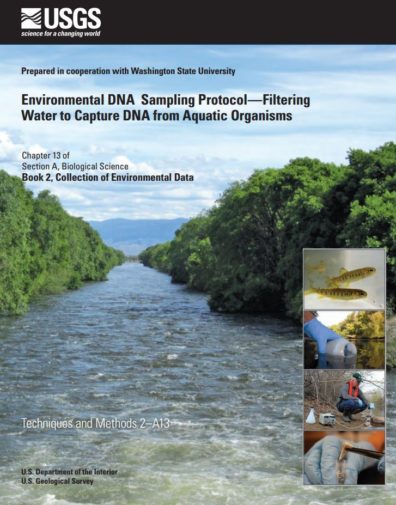
Environmental DNA sampling methods vary depending on the unique ecological conditions and goals of individual sampling programs. Peer-reviewed publications usually include summaries of the specific methods used for sample collection, concentration, and preservation, but a handful of published protocols provide more detailed, step-by-step instructions that can be used in many sampling situations. A critical component of these and other sampling protocols is strict adherence to practices for preventing cross-contamination among samples. If you’re modifying existing protocols for a new aquatic system or sampling objectives, continue to follow stringent measures to avoid contamination. These are protocols we typically use on our work. A more comprehensive list can be found at https://ednaresources.science/field-methods.
Washington State University
Goldberg, Caren, and Katherine Strickler. 2016. Washington State University, Pullman, WA. 15p.
Note: We have found that Sterlitech filter funnels (AF045W50) make a better seal than the Nalgene filter funnels used in these protocols and are able to filter more water before clogging. Filters can be swapped for PES 5.0 micron filters in systems where clogging is an issue (prior to 2021 this required Sterlitech 128006 which had to be custom for the filter funnels because they were 48 mm; as of our 2021 order, this is no longer the case). However, cup size is smaller (100 mL Sterlitech vs. 250 mL Nalgene). Sterlitech has a similar product in 300 mL but they have a different design. We recommend putting the filter cup stem directly on the stopper without the adapter for better performance.
U.S. Geological Survey
Environmental DNA sampling protocol – filtering water to capture DNA from aquatic organisms
Laramie, M.B., Pilliod, D.S., Goldberg, C.S., and Strickler, K.M., 2015, Environmental DNA sampling protocol— Filtering water to capture DNA from aquatic organisms: U.S. Geological Survey Techniques and Methods, book 2, chap. A13, 15 p., http://dx.doi.org/10.3133/tm2A13.


